Abstract
The frequency and nature of exertion pains of the leg in athletes were studied in 2,750 cases of overuse injuries treated at the Sports Clinic of the Deaconess Institute of Oulu, Finland, during the years 1972-1977. 465 cases of exertion pain (18%) were located in the shin. The medial tibial syndrome was the most common overuse injury among these athletes, comprising 9.5% of all exertion injuries and 60% of the leg exertion pains. Together with stress fracture of the tibia, the second most common exertion pain of the leg, it accounted for 75% of the total leg pains. There are certain difficulties in differentiating between the medial tibial syndrome and stress fracture of the tibia. They both occur at the same site with similar symptoms. Radiological examination and isotope scanning are needed. The medial tibial syndrome is an overuse injury at the medial tibial border caused by running exercises. The pain is elicited by exertional ischaemia. The pathogenesis is explained by increased pressure in the fascial compartment of the deep flexor muscles due to prolonged exercise. Similar chronic ischaemic pains from exercise are also found in other fascial compartments of the leg, especially in the anterior compartment. The only treatment needed for stress fractures is rest from training. Fascial compartment pains also usually subside. If chronic fascial syndromes prevent training, fasciotomy is recommended as a reliable method to restore the athlete to normal training without pains.
Full text
PDF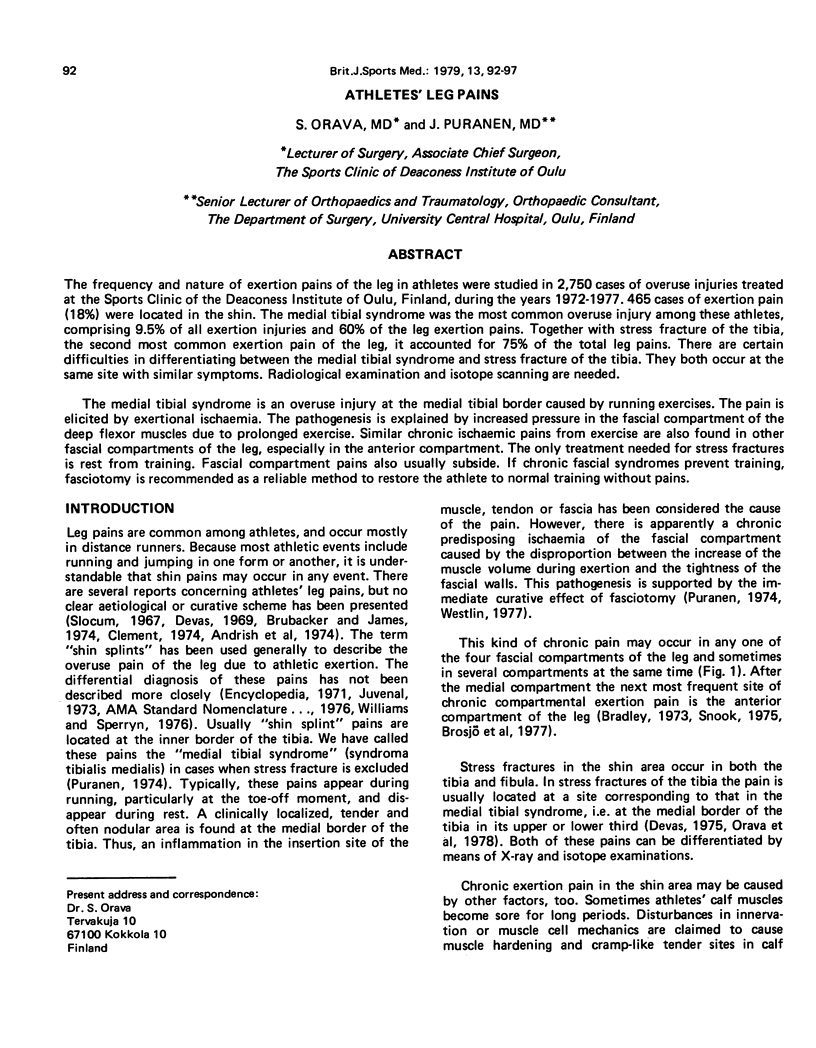
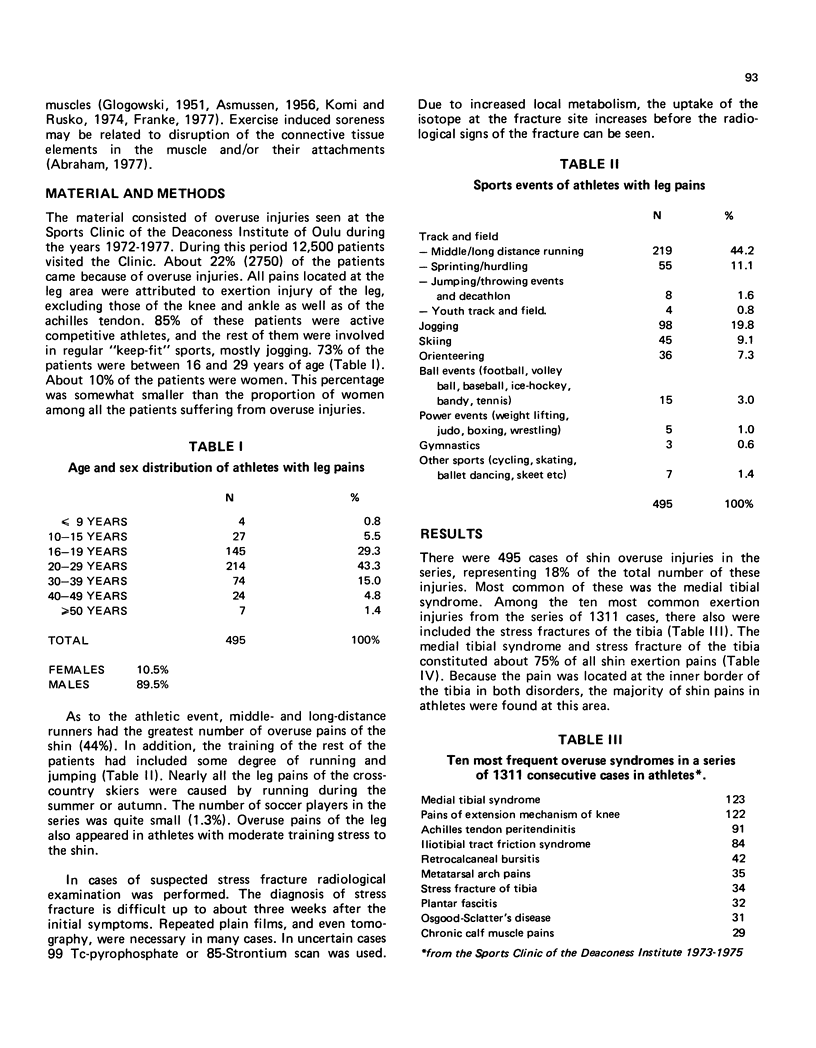
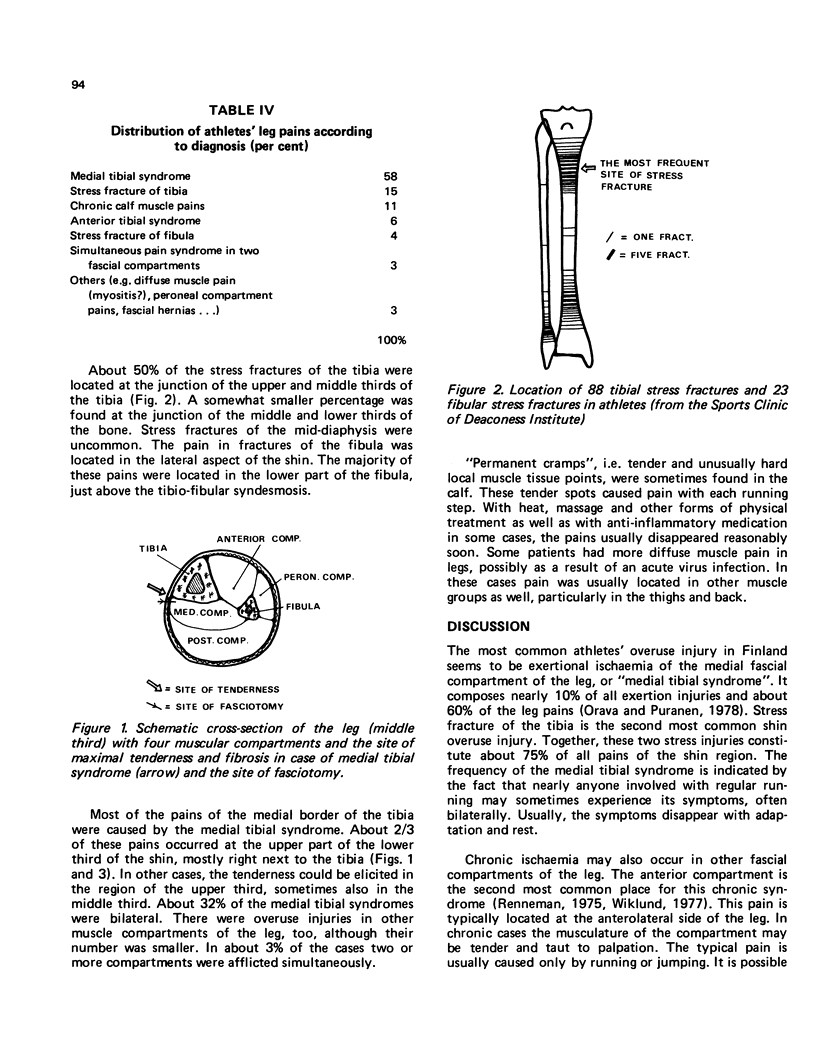
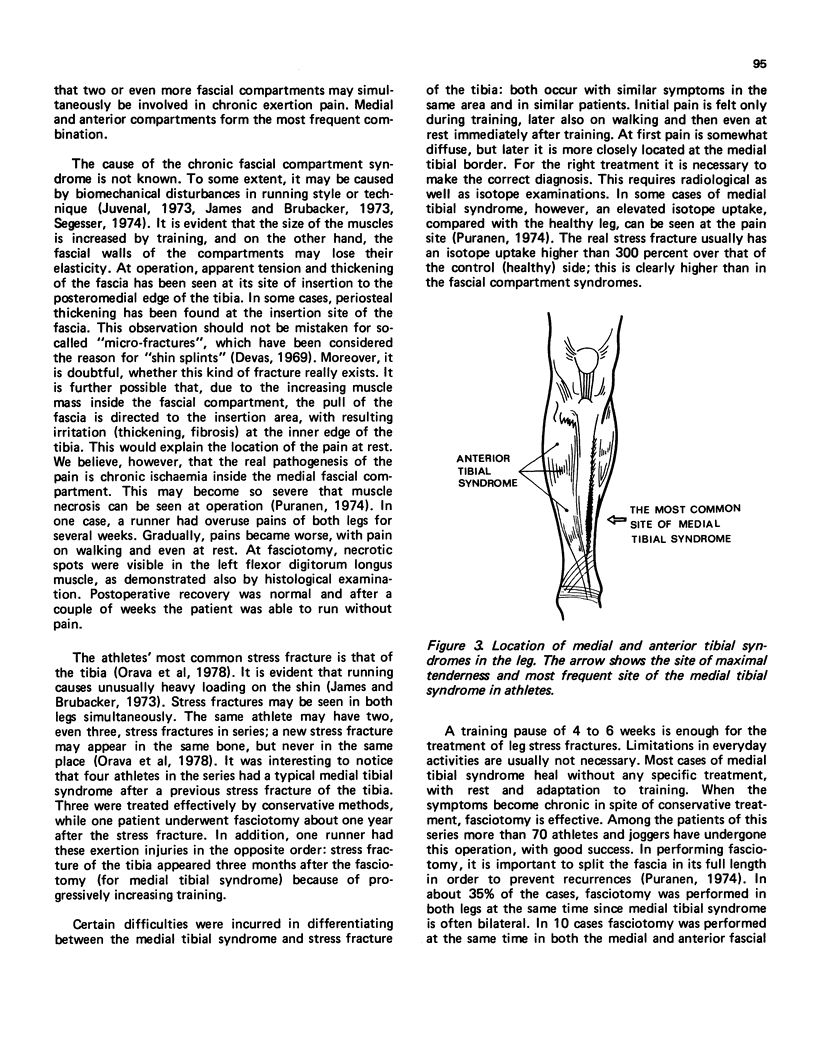
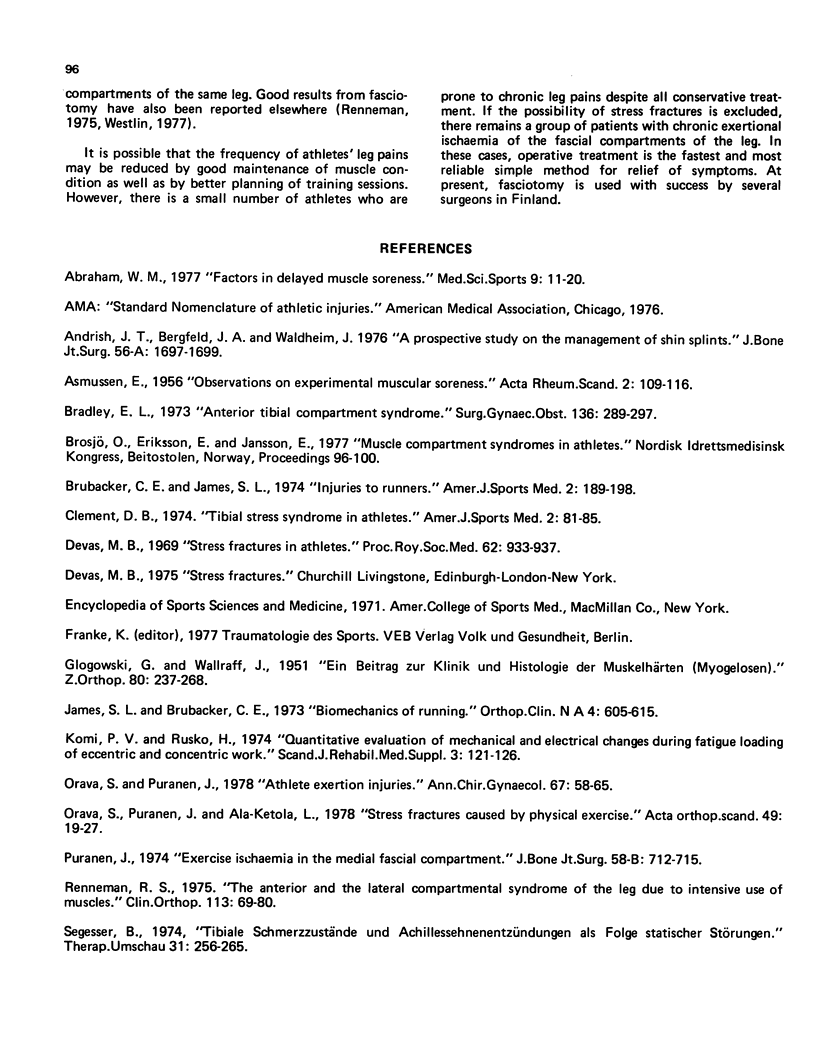
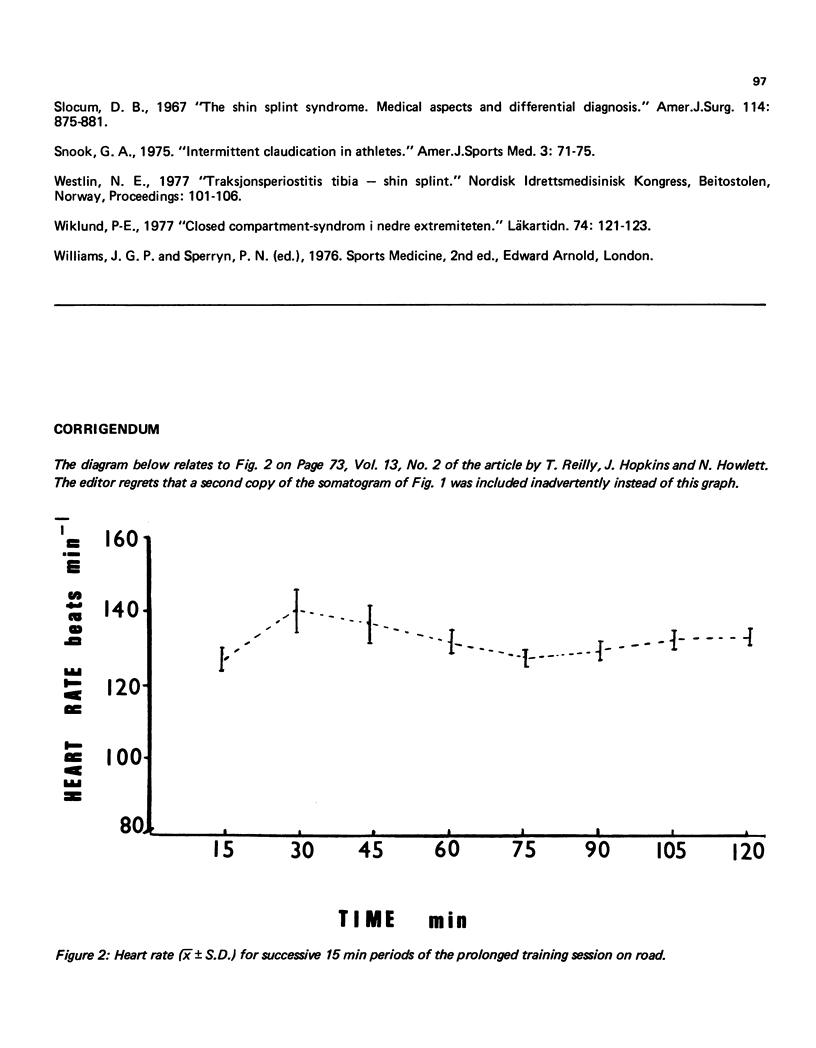
Selected References
These references are in PubMed. This may not be the complete list of references from this article.
- Abraham W. M. Factors in delayed muscle soreness. Med Sci Sports. 1977 Spring;9(1):11–20. [PubMed] [Google Scholar]
- Andrish J. T., Bergfeld J. A., Walheim J. A prospective study on the management of shin splints. J Bone Joint Surg Am. 1974 Dec;56(8):1697–1700. [PubMed] [Google Scholar]
- Bradley E. L., 3rd The anterior tibial compartment syndrome. Surg Gynecol Obstet. 1973 Feb;136(2):289–297. [PubMed] [Google Scholar]
- Clement D. B. Tibial stress syndrome in athletes. J Sports Med. 1974 Mar-Apr;2(2):81–85. doi: 10.1177/036354657400200203. [DOI] [PubMed] [Google Scholar]
- Devas M. B. Stress fractures in athletes. Proc R Soc Med. 1969 Sep;62(9):933–937. [PMC free article] [PubMed] [Google Scholar]
- GLOGOWSKI G., WALLRAFF J. Ein Beitrag zur Klinik und Histologie der Muskelhärten (Myogelosen). Z Orthop Ihre Grenzgeb. 1951;80(2):237–268. [PubMed] [Google Scholar]
- Komi P. V., Rusko H. Quantitative evaluation of mechanical and electrical changes during fatigue loading of eccentric and concentric work. Scand J Rehabil Med Suppl. 1974;3:121–126. [PubMed] [Google Scholar]
- Orava S., Puranen J., Ala-Ketola L. Stress fractures caused by physical exercise. Acta Orthop Scand. 1978 Feb;49(1):19–27. doi: 10.3109/17453677809005718. [DOI] [PubMed] [Google Scholar]
- Puranen J. The medial tibial syndrome: exercise ischaemia in the medial fascial compartment of the leg. J Bone Joint Surg Br. 1974 Nov;56-B(4):712–715. doi: 10.1302/0301-620X.56B4.712. [DOI] [PubMed] [Google Scholar]
- Segesser B. Tibiale Schmerzzustände und Achillessehnenentzündungen als Folge statischer Störungen. Ther Umsch. 1974 Apr;31(4):256–265. [PubMed] [Google Scholar]
- Slocum D. B. The shin splint syndrome. Medical aspects and differential diagnosis. Am J Surg. 1967 Dec;114(6):875–881. doi: 10.1016/0002-9610(67)90410-2. [DOI] [PubMed] [Google Scholar]
- Snook G. A. Intermittent claudication in athletes. J Sports Med. 1975 Mar-Apr;3(2):71–75. doi: 10.1177/036354657500300204. [DOI] [PubMed] [Google Scholar]
- Wiklund P. E. Closed compartment-syndrom i nedre extremiteten. Lakartidningen. 1977 Jan 19;74(3):121–123. [PubMed] [Google Scholar]


